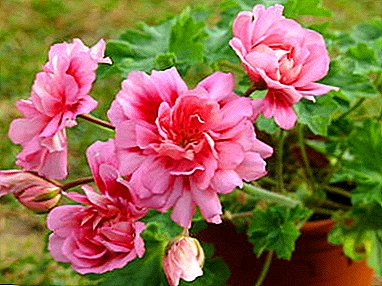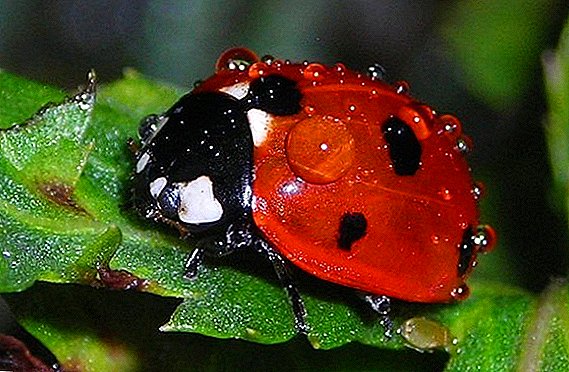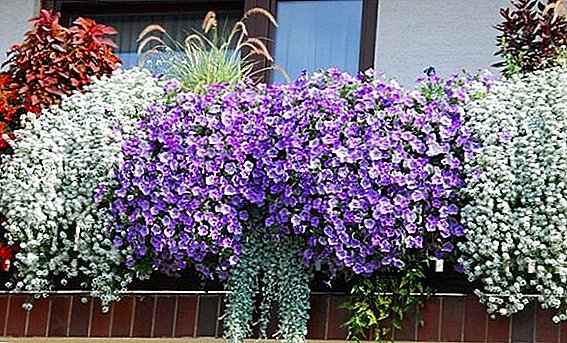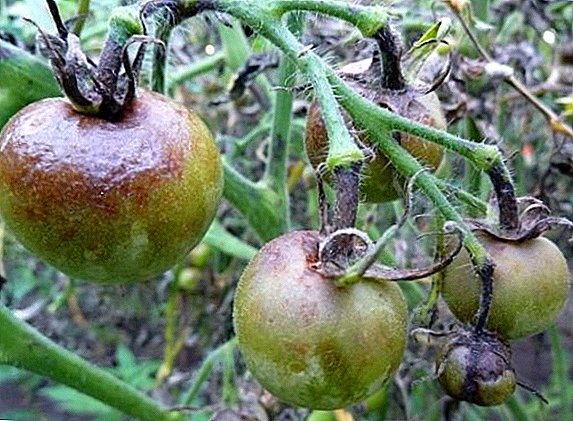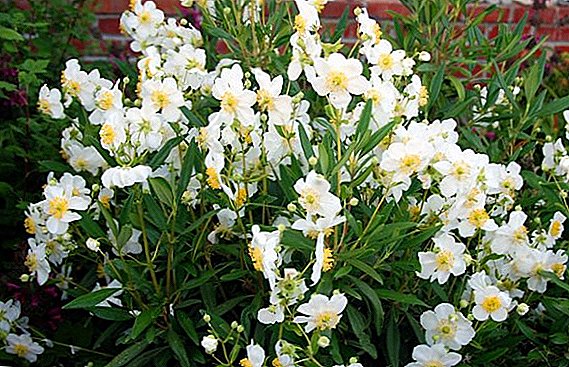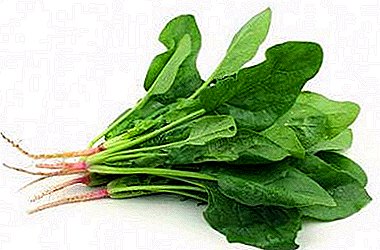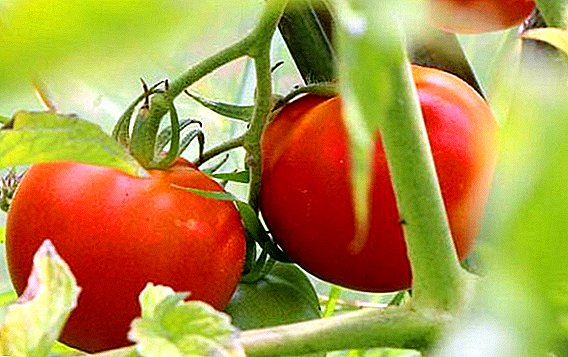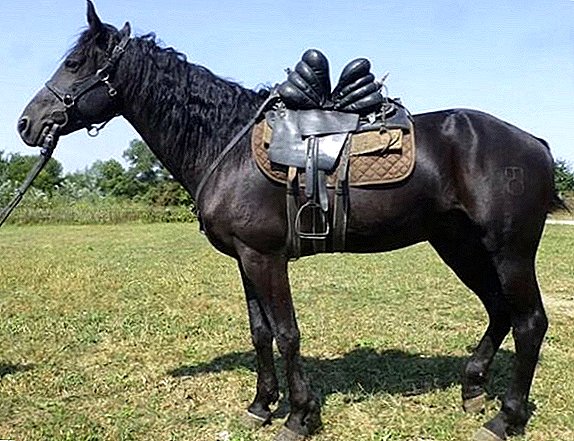 The Kabardian breed was bred long ago and to this day enjoys well-deserved respect. The mass of advantages of these horses causes interest in riding enthusiasts.
The Kabardian breed was bred long ago and to this day enjoys well-deserved respect. The mass of advantages of these horses causes interest in riding enthusiasts.
In the article we will take a closer look at this breed and its features, we will learn the history of its origin, the scope of use and the conditions of detention.
Breed history
The Kabardian horse appeared on the territory of the modern Kabardino-Balkarian Republic, part of the North Caucasus Federal District. It is believed that this breed was the result of a long cross-breeding of local horses with Eastern breeds. Owing to this mixing and constant selection, the mountaineers bred an animal well adapted to the local mountain conditions and meeting their requirements.  Unpretentious horses carrying cargo and people on dangerous paths of the Caucasus, not requiring a horseshoe, became known in the XVI century, when Kabarda flourished. At the same time, they also showed good results in the conditions of the plain during military incursions. Such mounts willingly bought know from the countries of the Middle East, they were appreciated by the Russians. When Kabarda joined the Russian Empire, work on this breed continued.
Unpretentious horses carrying cargo and people on dangerous paths of the Caucasus, not requiring a horseshoe, became known in the XVI century, when Kabarda flourished. At the same time, they also showed good results in the conditions of the plain during military incursions. Such mounts willingly bought know from the countries of the Middle East, they were appreciated by the Russians. When Kabarda joined the Russian Empire, work on this breed continued.
Did you know? Travelers noted that Circassians cared for their horses better than their relatives. Even the princes, despite the high status and a considerable number of servants, cleaned them themselves.The military actions of the first world and civil wars brought mountain horses to the brink of extinction. To restore and improve the breed, Kabardians began to cross with representatives of European riding breeds. As a result, a larger variety was bred - Anglo-Kabardian horses, combining the agility of the English horses and the unpretentiousness of hardy mountain horses. This line is considered by many to be a new breed. Kabardian horses are still being bred at Malkinsky and Malokarachayevsky stud farms, where they are also working to restore the original appearance of these animals.
Description and Features
Kabardian horses are a classic harness-horse breed. They have their own distinctive features, advantages and disadvantages.
Exterior
Kabardians have a strong body constitution, good proportions. On average, adults of this breed weigh about 400 kg, and their height at withers is 152-157 cm. According to local collective farms of 1993, the body length of stallions of this breed was 178 cm, and of mares - 183 cm. 19.9 cm and 18.7 cm. Stud farms contain slightly larger specimens.  In the exterior of Kabardinians, there is a well-developed body with a wide chest, a straight short back, a drooping broad croup. On a low-set muscular neck of medium size there is a small dry head, on the profile of which there is a characteristic humpback of this breed. Hind legs with a saber-leaf configuration and a small X-shape attract attention. Also feature is the successful form of hoofs ("glass"), their extraordinary hardness and tenacity. The legs themselves are rather short and dry. They also have rather long and thick mane and tail.
In the exterior of Kabardinians, there is a well-developed body with a wide chest, a straight short back, a drooping broad croup. On a low-set muscular neck of medium size there is a small dry head, on the profile of which there is a characteristic humpback of this breed. Hind legs with a saber-leaf configuration and a small X-shape attract attention. Also feature is the successful form of hoofs ("glass"), their extraordinary hardness and tenacity. The legs themselves are rather short and dry. They also have rather long and thick mane and tail.
Learn how to choose the right horse for yourself.
Now inside the Kabardian breed there are three types:
- characteristic. Mountain horses are the most typical of the dry breed. They like to use it for patrols and for tourist purposes;
- Oriental. They are more pronounced eastern genes obtained from the Arab and Turkmen horses. Most often used for riding;
- massive. This type has a higher growth and large size, is used for commercial purposes as a pet.

Suits
Kabardian horse can be of the following suits:
- bay
- gray
- black;
- red, with a white spot;
- motley
The preference is usually given to bay and black horses.
We recommend to learn about effective methods for determining the weight of pets without scales.
Character
This unpretentious horse of universal appointment differ in high intelligence and lively temperament. They have a good memory, they do not accept violence over themselves, preferring gentle treatment. With the right upbringing, they show loyalty to the owner and are amenable to training.  This brave horse, not afraid of narrow mountain trails, can become a real comrade. Sometimes it shows a norm, it is difficult to detour. The riding horse completely submits to the owner. In general, Kabardians have a friendly character and high activity.
This brave horse, not afraid of narrow mountain trails, can become a real comrade. Sometimes it shows a norm, it is difficult to detour. The riding horse completely submits to the owner. In general, Kabardians have a friendly character and high activity.
Did you know? On average, horses live 25-30 years, Kabardian - up to 35-40 years. Most of all, he lived a horse of the breed that fell into the Guinness Book of Records due to having lived for 62 years.
Advantages and disadvantages
Kabardian horses have undoubted advantages to other breeds:
- unpretentiousness. These horses were kept for almost the whole year in herds and were fed with dry fodder and grain only in the winter period;
- adaptability to different conditions. The animal perfectly showed itself both in the conditions of the mountains and on the plains. It adapts well to different climates, tolerates changes in temperature and atmospheric pressure;
- excellent genetics. Genetic kit allows you to use them in breeding;
- versatility. This horse is suitable for riding (especially in mountainous terrain), and for the transport of goods. It shows good results in equestrian sports such as mileage and triathlon;
- strength and endurance. It can carry loads weighing 150 kg and take 100 km a day. In endurance competitions often take first places;
- good health. They have good resistance to various diseases, are fertile, they live long. They have high fecundity, and the yield of young stock reaches 85%. Mares are used on a tribe up to 20 years, and sometimes more;
- courage and care. It was developed on dangerous mountain trails and in clashes with the enemy;
- soft stroke. Everyone marks the comfort of this breed for riders. Even when moving at a gallop or trot, they maintain a comfortable pace and move smoothly;
- high intelligence. These horses have a good memory, they can be taught various tricks, they are well trained in training;
- strong, stable hooves. The shape of the hooves and their hardness, derived from frequent contact with rocks, allows you to maintain balance on the difficult paths of the Caucasus mountains. In the old days, they were not shod in order not to give out the location of the cavalry units with a clatter of hoofs. Now they are shod only front legs.

Read more about the features of breeding horses at home.
The disadvantages of this breed are few:
- medium size;
- unsuitable for most types of equestrian sports - they are not fast enough and frisky for him.
Using
Kabardian horses have not lost their popularity in our time. At home in Kabardino-Balkaria, they are used for movement in mountainous areas, transport of packs, and in harness for transporting small loads. Good nature, endurance, as well as the ability to move along difficult Caucasian paths, where vehicles cannot pass, have found application in such fields as equestrian tourism and border guard service. The soft trot of horses allows riders to be in the saddle for a long time. These animals are great for patrolling mountainous areas and for mounted police. Thanks to crossing with other horseback breeds, Kabardian horse breeds are very popular in those types of equestrian sports where endurance is necessary.
The soft trot of horses allows riders to be in the saddle for a long time. These animals are great for patrolling mountainous areas and for mounted police. Thanks to crossing with other horseback breeds, Kabardian horse breeds are very popular in those types of equestrian sports where endurance is necessary.
Did you know? In the mountains, on hard-to-reach paths, Kabardian horses do not go astray in total darkness or fog. Highlanders believe that this ability is developed at their genetic level.
Conditions of detention and care
At specialized factories for the breeding of horses of this breed usually used group stable and grazing method of maintenance. Herds are formed by selection by sex and age. With this method equip stables for a simpler project. Most of the time horses spend on pasture. In the absence of the necessary amount of green plants for feed on pasture, especially in winter, animals are given hay and ready-made production feed. With good grazing apply herd tebemenovochnuyu technology before the onset of cold weather.
The ideal option for the residence of Kabardian horses is a frame or timber-like structure made of wood. The thickness of the walls of the stables for a warm climate is about 20 cm, for a cold one is at least 25 cm. The air temperature in the room should be between 5-10 ° C. In the stable you need to ensure a good litter, using peat, straw and sawdust for this, constantly cleaning the entire room and stall.  It is important to monitor the dryness of the litter, especially in winter. In the stalls it is most convenient to use feeders that are removable - it is more convenient to take care of them and wash them. The room should be well ventilated, but without drafts, and be sure to be dry. It should be noted that the Circassians do not provide stables with lighting so that horses can see better and orient themselves in darkness or fog.
It is important to monitor the dryness of the litter, especially in winter. In the stalls it is most convenient to use feeders that are removable - it is more convenient to take care of them and wash them. The room should be well ventilated, but without drafts, and be sure to be dry. It should be noted that the Circassians do not provide stables with lighting so that horses can see better and orient themselves in darkness or fog.
When caring for these horses, it is necessary to periodically bathe with the use of special scrapers and brushes to care for the animal's woolen coat. Manes are thoroughly washed with egg yolk and soap or use a special shampoo for horses. After water procedures, the mane needs to be combed well. This procedure is carried out carefully so as not to hurt the animal, otherwise the horse may kick in response and injure the owner. Bathing is recommended to be carried out at least once every 7 days, and during training before the competition - more often.
Did you know? It is necessary to wash off soap or shampoo well after soaping so that the animal does not develop irritation or an allergic reaction.Another important point in the care of these animals is the cleaning of their hooves. Every day you need to inspect the hoof, clean them from dirt and stones, as well as when there is a need to rub with special oils. Every 24 days it is necessary to remove horny dead tissue from the hooves so that no changes will occur. If necessary, the horse shoe. Animals from an early age should be taught to file a foot for inspection or forging, otherwise problems may arise in the future. It is also necessary to monitor the condition of the teeth of the animal: for this, every 6-12 months, they are examined by a dentist. For elderly horses, this procedure is carried out more often.
 It should also be noted that the Adyghe horses need regular exercise.
It should also be noted that the Adyghe horses need regular exercise.Animal diet
In terms of nutrition, this breed of horses is unpretentious: almost all types of horse feed are suitable for them - hay, grain crops (barley, oats, corn, etc.), straw, industrial feed. In the diet is useful to include additives in the form of vegetables. When grown in a factory, the ration consists of hay and industrial feed. When stable and grazing in the autumn, when there are few green plants on pastures, for the tribe and working horses feed up to 8 kg of carrots per day, and mares that feed the foals, add potatoes and beets to the diet, and also include grains in the diet stern.
Did you know? Vegetables must be washed in order not to infect animals with fungal diseases and do not cause intestinal upset.At horse breeding plants, food is prepared as follows: cereal is poured with hot water, then bran, molasses, molasses, vegetables, and fruits are put; hay is crushed. The diet of horses depends on the degree of load and use. When breeding horses for participation in sporting events, it is necessary to take care of the diet especially carefully. For this purpose, use food with energy additives. It is also necessary to ensure that horses receive about 50 liters of water per day.
 Kabardian breed unpretentious and hardy, great for riding and transporting small loads. Lovers of equestrian tourism appreciate their endurance and smooth ride. Due to the many advantages, Kabardians are used in many areas, but they are not widely used due to their low suitability for most types of equestrian sports. In addition, these horses do not require difficult conditions for their maintenance and have excellent health.
Kabardian breed unpretentious and hardy, great for riding and transporting small loads. Lovers of equestrian tourism appreciate their endurance and smooth ride. Due to the many advantages, Kabardians are used in many areas, but they are not widely used due to their low suitability for most types of equestrian sports. In addition, these horses do not require difficult conditions for their maintenance and have excellent health.

